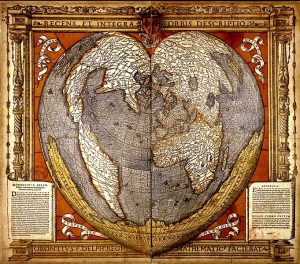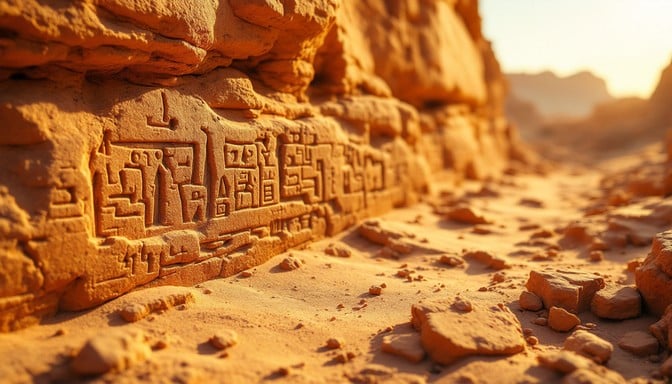The Orontius Finaeus Map
Who Was Orontius Finaeus?
Oronce Finé (1494–1555), also known by his Latinized name Orontius Finaeus, was a French mathematician, cartographer, astronomer, editor, and illustrator. Born in Briançon into a family of physicians, he studied medicine in Paris but soon turned to mathematics and astronomy.
Finé became the first royal lecturer in mathematics in France, not for groundbreaking discoveries, but for popularizing mathematical education throughout the country. His works included treatises on astronomy, geometry, and cartographic design. He also gave one of the earliest refined approximations of π (pi) in 1544, calculating it at 3.1746.
The Orontius Finaeus Map
In 1531, Orontius Finaeus published his world map Nova Universi Orbis Descriptio, where he attempted to reconcile recent New World discoveries with older medieval legends and Ptolemaic geography.
Key features include:
-
Merging of Asia & America – North America was shown fused with Asia, suggesting confusion between the two continents.
-
South America Named “America” – He adopted the new toponym while still layering older place names like Marco Polo’s Mangi, Tangut, and Catay onto the wrong shores.
-
Terra Australis – To the south, Finaeus drew a massive southern continent labeled “recently discovered but not yet completely explored.” This was inspired by Magellan’s discovery of Tierra del Fuego, interpreted as a gateway to a great unknown land.
Influence and Mysteries
The Orontius Finaeus Map reflects the transitional stage of Renaissance cartography, where explorers’ reports clashed with inherited medieval models. Like the Piri Reis Map, it has fueled speculation about whether early cartographers had access to lost knowledge of the southern continent long before Antarctica’s official discovery in 1820.
Finaeus also published De Mundi Sphaera (1542), an astronomy textbook with popular woodcut illustrations. His instruments, such as the météoroscope (a modified astrolabe with a compass), combined scientific precision with innovation.
The legacy of Orontius Finaeus rests not only on his contributions to mathematics and astronomy but also on the way his maps bridged old myths with the dawn of global exploration.
Related Articles in Our Ancient Maps Series
And for broader mysteries of lost civilizations:

References
_______________________________________________________________________________________
- Weisstein, Eric W. “Archimedean Solid.” From MathWorld—Wikipedia: https://en.wikipedia.org/wiki/Oronce_Fine
- Cuochi, Diego “The Charter of Orontious Finaeus (Oronce Fine)” https://www.diegocuoghi.com/Piri_Reis/Finaeus.htm
- Frank J. Swetz (The Pennsylvania State University), Mathematical Treasure: Oronce Fine’s 1534 World Map https://www.maa.org/press/periodicals/convergence/mathematical-treasure-oronce-fine-s-1534-world-map





